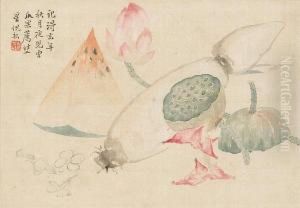Ni Yun Paintings
Ni Yun was a Chinese artist who lived during the late Ming and early Qing dynasties. He is not as widely known as some of his contemporaries, which is why specific details about his life and career may be scarce compared to more famous artists of the period like Xu Wei or Dong Qichang. Ni Yun is known to have been active in the early 17th century, a time of political turmoil and transition in China.
Ni Yun was born in 1593 in China, a time when the Ming Dynasty was nearing its end. Throughout his lifetime, he would have witnessed the significant political, social, and cultural changes occurring in China, including the fall of the Ming Dynasty and the establishment of the Qing Dynasty by the Manchu invaders in 1644, the year of his death.
As an artist, Ni Yun would have been trained in the traditional Chinese arts, which included painting, calligraphy, and poetry. His work would likely have reflected the literati ideals of the period, which emphasized personal expression, scholarly learning, and an adherence to a set of cultural practices that were valued amongst the educated elite of Chinese society. The literati artists often distanced themselves from the more commercial and court-oriented artists of their time, focusing instead on personal cultivation and artistic expression as part of their scholarly pursuits.
Ni Yun's artwork would have been influenced by the styles of the great masters who came before him, and he would have contributed to the ongoing development of Chinese landscape and literati painting. However, without more specific information on his surviving works or contributions to the art world, it is challenging to provide a more detailed account of his unique style or the impact he may have had on the art of his time.
Upon his death in 1644, Ni Yun would have been one of many artists of his generation who lived through the dynastic transition, which not only marked the end of his life but also the end of a significant era in Chinese history. His works, if any have survived and been properly attributed to him, would offer a glimpse into the artistic traditions and cultural climate of late Ming and early Qing China.
